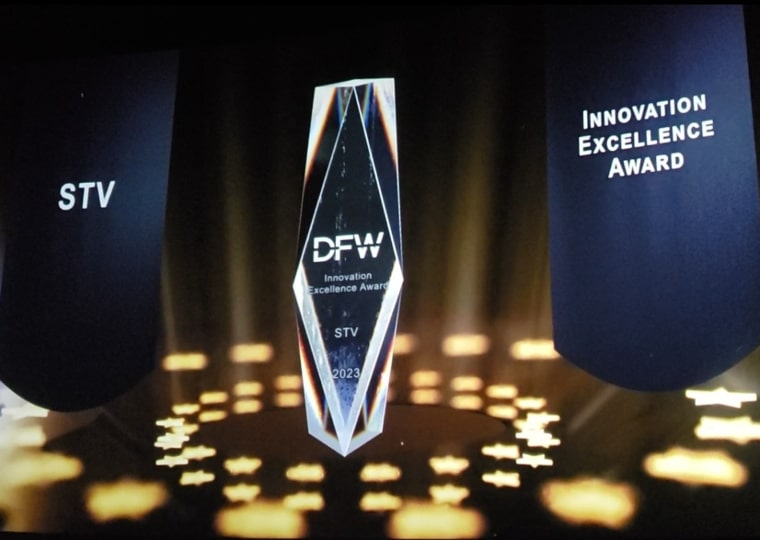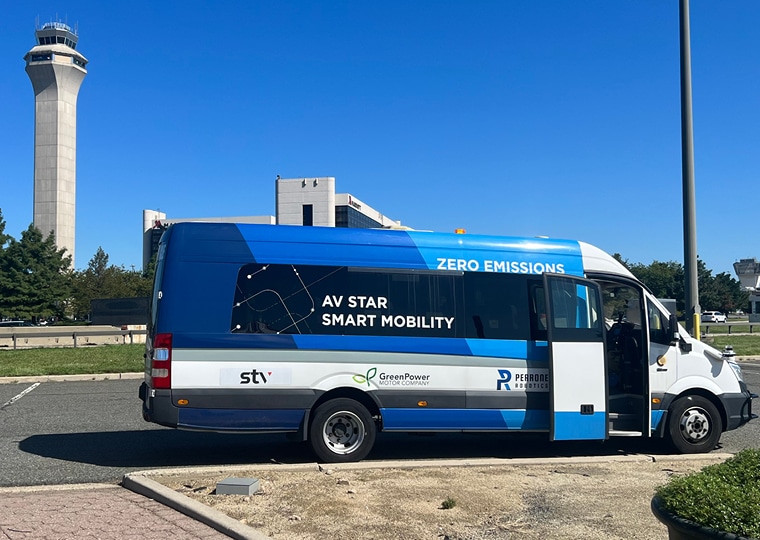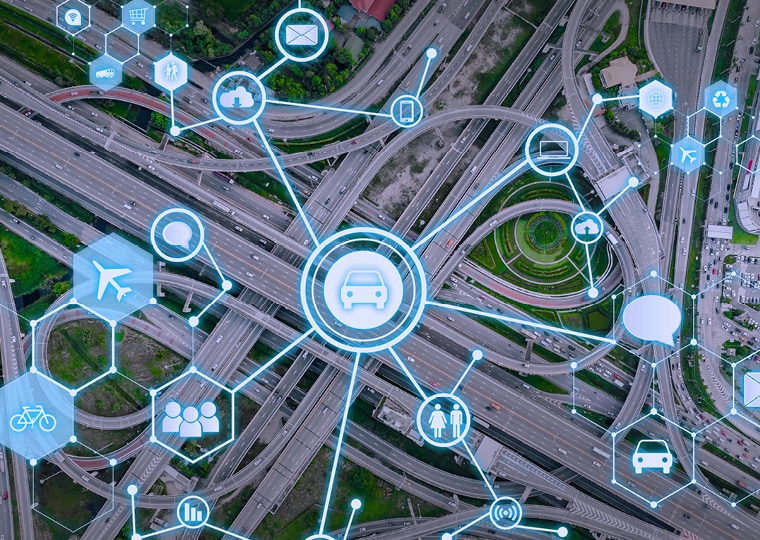
We are currently at an inflection point when it comes to the evolution of mobility technology and how it interacts with our surface transportation network – i.e., personal vehicles, public and private transit, and transportation network companies (TNC) like Uber and Lyft – freight and movement of goods; parking; wayfinding; customer service, payment, communications and security systems; and more. The need to create a more efficient, user-friendly, and environmentally sustainable transportation network is pushing our clients to innovate in the areas of electrification and automation, artificial intelligence and machine learning, and digital roadway infrastructure. And that means we, as consultants, need to help our clients develop effective ways to both learn about emerging mobility solutions in the marketplace and integrate it as a solution for staff and customers.
Our nation’s airports have emerged as ideal venues to demonstrate, test, and provide scaled technology deployments for our clients across the country. Our aviation clients are driven by a desire to streamline operations and to offset rising labor costs, as well as the industry’s commitment to achieve net-zero carbon emissions by 2050. To that end, in recent months, our STV team has contracted to perform a range of professional services work at some of the nation’s largest airports, including Dallas Fort Worth International Airport, that is helping these, and other clients better integrate innovative solutions at these facilities.
For freight traffic and the movement of goods into and out of airports, the aviation arena offers several advantages as it relates to testing and deployment of new and emerging technology. Most major U.S. airports are highly accessible to freight traffic because they are near or adjacent to interstate or other major roadway routes. And these routes are typically owned/operated by local, state or federal departments of transportation. As a result, there is a consistent mix of full- and less-than-truckload (a relatively smaller load/quantity) shipments that need to access the airport or logistic centers near the airport that arrive by rail, ports (marine and inland), and distributions centers typically within a five-mile radius of an aviation hub.
Having this accessibility provides a great opportunity to test automated interstate freight movement. Texas has emerged as one of the nation’s leaders in this regard, especially as it relates to the transition to last mile delivery. The delivery of food, merchandise, materials and daily airport terminal operational supplies helps showcase last mile delivery from on-sight logistic centers to airport facilities. By using new technology, rather than having multiple vendors delivering products to terminals and facilities, we can use coordinated automated trucking to deliver products during off-peak times, thereby reducing vehicular volume and congestion.
Building on the idea of coordinated and automated last-mile deliveries, airports can integrate the use of light to medium-duty electric trucks within the above automated process, thus reducing the facility’s carbon footprint. Most landside truck carbon emissions are from delivery and passenger vehicles accessing and idling within the airport. According to the Federal Aviation Administration, ground-based landside airport greenhouse gas emissions are mostly caused by gasoline and diesel fuel for airport vehicles.
At STV, our team looks to find new ways to support our airport clients, as well as partner with vendors and solution providers to advance the greater mission of the aviation industry. The continued growth of calculated technology testing and integration at airports is a surefire way we can all jointly achieve that mission.

Dan Corey, P.E., is an STV vice president and national director of mobility technologies. In this role, he leads the firm’s practice of intelligent transportation systems, electric vehicles, connected and automated vehicles and data professionals.






